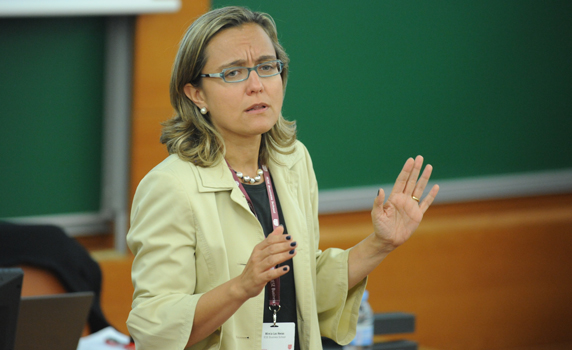
Experiencing a number of different roles and working as an executive assistant in the early stage of one’s career will foster executives’ adaptability. Defined as the ability to work effectively in different situations, this skill is perhaps the most crucial competency for tomorrow’s executives in order to survive and prosper in an ever-changing market.
These are the conclusions of the investigation IESE's Mireia Las Heras -- together with Salem State University's Guorong Zhu, GEI Partners' Steve B. Wolff, Boston University's Douglas T. Hall and Kathy Kram, and Hay Group's Betzaluz Gutierrez – has carried out and which has been published in the journal Career International Development.
As to establish whether executives with more varied career histories become more adaptable as a result, the authors of the study analyzed a group of high-level general managers in a Fortune 100 listed company. The analysis was based on the most widely-used job-evaluation method, Hay Group’s “Guide Chart-Profile Method”, which classifies job positions into categories according to the role type (line, matrix or staff) and organizational level (from tactical implementation to enterprise leadership).
Moreover, results of recent interviews used to select managers for executive positions were also considered since adaptability was one of the competencies assessed. The ability of executives to adapt themselves to new environments is directly related to the number of job categories individuals have been in during their careers.
The reason for this is that changing roles forced managers to learn entire new skill sets and adapt to radically different environments. In the long run, this helped them develop new competencies and strategies. However, varying too frequently isn’t good either. There is not enough time for individuals to get a feel for the nuances of the role and the consequences of their actions. Hence, the optimum number of role-type changes seems to be three, spending just over eight years in each position. This gives them time to settle into their role and take responsibility for their decisions without letting them become too complacent.
Another relevant fact that concluded the investigation is that, in general, those executives who show a great ability to adapt to new professional environments had been previously placed in an executive assistant role to a member of senior management early in their careers. This seems to be a very useful experience in terms of learning from an executive: they contribute to decision-making processes and, at the same time, receive valuable mentoring and the chance to develop a priceless professional network.
The complete and detailed methodology, sample and results of this study can be found in the article “Too Much or Too Little? A Study of the Impact of Career Complexity on Executive Adaptability” which is available online.
For more information on this research, see IESE INSIGHT